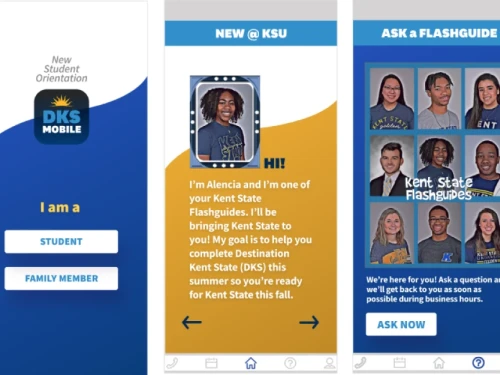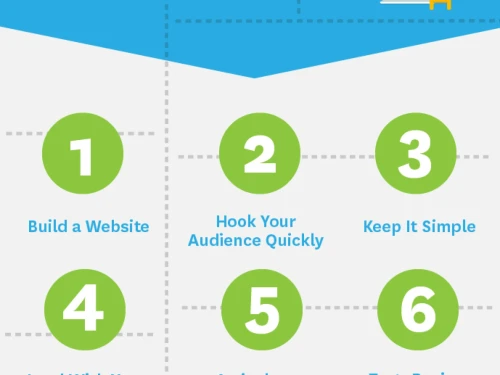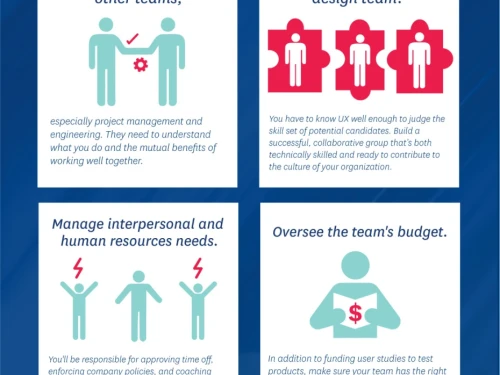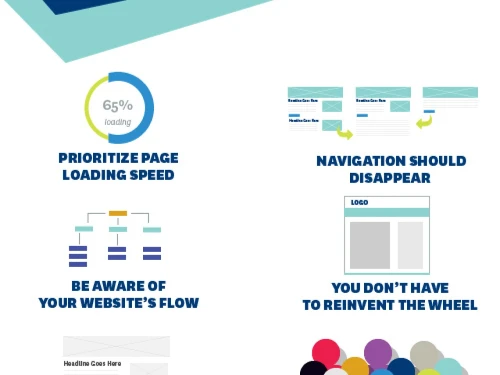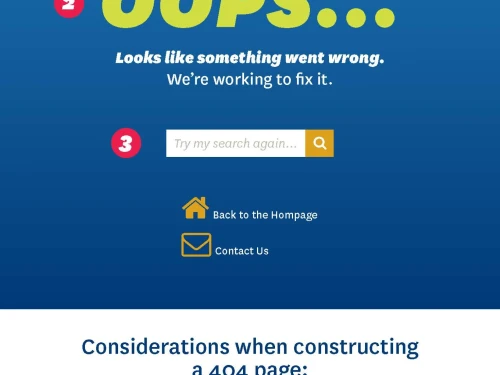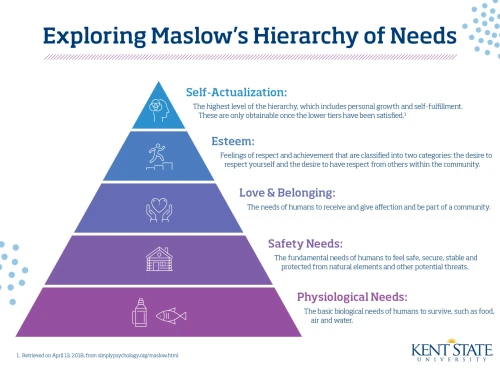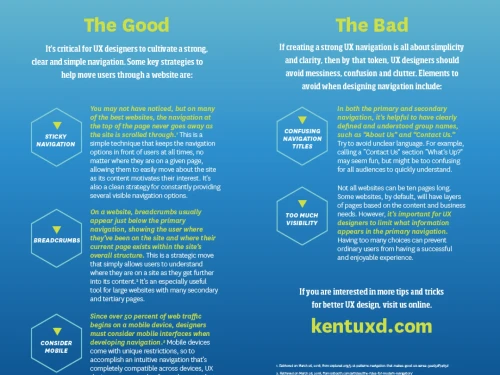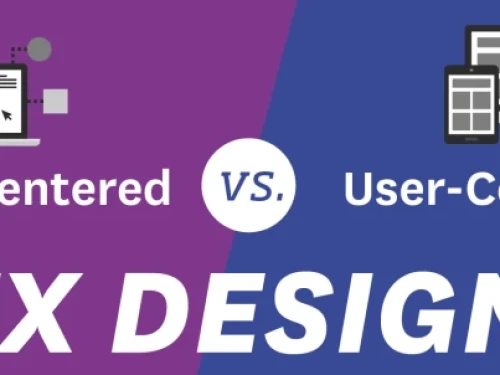Usability
Explore key insights and trends in usability and user experience (UX) through Kent State’s blog posts. Learn from industry professionals about UX careers, design principles, and best practices for creating seamless digital experiences. Discover how UX impacts business success, the latest in responsive web design, and how to build an impactful UX portfolio for career advancement.
Related Blog Posts
Felesia McDonald, ’14 is an adjunct instructor in the iSchool, teaching courses in the 100% Online Master of Science in User Experience. McDonald is also the Sr Manager UX Design at Optum, a branch of UnitedHealth Group.
As one of the newest faculty members in the iSchool, Professor Dong Whi Yoo is encouraging students to see the potential of interdisciplinary research.
Kelsey Pytlik serves as an adjunct professor for the Kent State University School of Information, teaching courses in UX, UX principles and concepts, principles of interaction, and more.
UX designer jobs are part of the fastest-growing career fields in the United States for reasons that should come as little surprise. Quality user experience design (UXD) can lead to an increase in site conversions of up to 400 percent,1 which can greatly impact brand loyalty and sales, and most web users say they won’t recommend a business with a poor mobile experience.
Knowing how to write a design brief can help drive an overall understanding of a project’s needs. A truly excellent design brief, however, bridges the terrain between a good idea and making it into reality. By effectively communicating all the essential environmental factors, requirements, constraints and needs of a design project, a brilliant design brief can energize all parties involved.
Kent State University’s online Master’s in UXD program is proud to be accredited by the National Association of Schools of Art and Design (NASAD). The only accreditation agency covering the entire field of art and design that the United States Department of Education recognizes, NASAD has approximately 360 member institutions.1
Millions of people apply for a master’s degree program in the hopes of getting advanced education to improve their careers. In some career fields, a master’s degree is required for certain positions. In others, it’s good to have but not essential.
When people interact with computers they do so through interfaces. These interfaces are designed by humans, and in the optimal situation, they are user-friendly and easy to navigate. As more of us use computers and machines daily for everything from work to shopping and social interactions, user experience (UX) is more critical than ever before.
It used to be that computer programmers learned how to design a robust user experience on the fly, sometimes with minimum computer science training. Those days are long gone. Roles for self-taught Renaissance experts have largely given way to a number of specialized careers in programming and web design. One such career is the lucrative, in-demand field of user experience (UX) design.
Page layout design, also called page composition, combines eye-pleasing aesthetics with compelling text to communicate a message. However, perfecting the on-page user experience (UX) isn’t as easy as it sounds. Instead, human-centered UX designers rely on fundamental design principles to achieve their goals. Learn how the following design elements help create an effective page layout and why it matters to your users.
Drew Shipka works for the Office of Continuing and Distance Education and has helped improve online classes at Kent State University for over a decade. He leads a team of instructional designers whose primary responsibilities are developing fully online graduate programs. He earned master’s degrees in Philosophy from the University of Western Ontario, and Library and Information Science, and Information Architecture Knowledge Management from Kent State University.
Alison Hayne’s first app design project had 6,000 users.
At first glance, Chello Elmi might seem like an unusual fit for a UXD program. She studied psychology as an undergraduate, but when it came time to earn her master’s, all she knew was she didn’t want to continue in a therapeutic or mental health field.
User experience design (UXD) is a strategic undertaking. At minimum, it requires a fundamental understanding of digital sociology and the principles of storytelling and website design. While UX designers are often exceptionally intelligent people, there are always ways in which they can improve their overall output.
Responsive Web Design (RWD) is the approach that suggests that website design and development should enable each site to respond automatically to a user’s behavior and environment—that is, whether that person is using a laptop, iPad, Android phone or other device, viewing in portrait or landscape mode, and so on.1 In the case of public displays, recent work also considers the viewer’s distance from the screen within the context of RWD.2
User Experience (UX) designers are highly sought after in a wide array of industries, from computer and software companies such as Apple, Microsoft and Adobe to popular websites such as LinkedIn, Google and Amazon. You can enjoy a highly paid career with an investment company, major retailer or entertainment firm.
Kent State User Experience Design (UXD) Instructor Kelsey Pytlik has an undergraduate degree from Miami University of Ohio and a master’s degree in User Experience Design from Kent State University. After her early career with creative agencies and e-commerce retailers, she became the sole UX designer for luxury furniture retailer Frontgate. She is now the CEO of Gild Collective, which is dedicated to empowering women through inclusion and leadership.
User experience design (UXD) lets you use your creativity, research skills and technological expertise to shape how others view the world. If you want to excel at building your UX resume, be prepared to impress employers with new ways to solve problems. You also need a skill set that’s grounded in UX fundamentals, yet shows synergistic capability.
The definition of “product designer” as a professional role can be a bit ambiguous. Job titles naturally change over the years as technology and culture change, and because creative professionals such as designers typically want to stand from their peers.1 The title “product designer” is one that has risen in popularity in recent years. Because the job responsibilities of a product designer can overlap those of similar roles such as a user experience (UX) or user interface (UI) designer, even people who work alongside them may not be sure exactly what the job of product designer entails.
Kent State online Master of Science in User Experience Design (UXD) student Kendra Jobes, MS ’19 candidate, has always wanted her work to make an impact on people. When her undergraduate degree in design led to an initial user experience job after college, she quickly learned that she enjoyed developing and using the artistic and technical skill set required for a UX role.
With a projected 10-year job growth rate of over 20 percent,1 the field of user experience (UX) design is exploding right now, and a graduate-level UX degree can help you get into the fast lane of this ever-expanding career track. If you’re forward thinking, curious about UX design trends and someone who thrives in a fast-paced and dynamic environment, you just might have what it takes to be a successful UX designer—at least according to Ben Woods, a UXD professional with nearly two decades of experience and a faculty member at Kent State University.
Part of finding the perfect UX design career is building an awesome portfolio. Below, we’ve provided five easy steps to help you develop a portfolio that is sure to turn heads, helping to give you and your career the opportunity to excel.
As user experience (UX) designers consider their long-term career goals, some assume that management is the obvious next step. It’s true that the best managers usually have a background in the field they manage. But management also requires skills for which designers aren’t often trained, including leadership, time management, budgeting and interpersonal skills. Not every talented designer is a good fit as a manager, but for the right person, UX design management can be an immensely rewarding and satisfying career path.
An increased emphasis on interaction with digital platforms in the contemporary world means new career paths for creatives working in digital fields—especially those whose skills lend themselves to user experience (UX) design and development. If you’re a graphic designer thinking about a career change, consider making the switch to UX design.
Good user experience (UX) is good business. The average American internet user spends nearly 24 hours per week on the internet, and best practices in UX design have become crucial not only to success online, but also in the physical world, where online brand and service experiences carry over into other real-time interactions.1 But since the internet is where we largely work, study, socialize and shop today, implementing proven UX design principles can make the difference between successfully engaging users and losing them to competing sites and services.
Nobody likes a 404 page. It’s never the page you were trying to find, and it’s usually not your fault that you ended up there. Standard error messages can be inscrutable, and the typically austere 404 page itself can disconnect the user from the overall site experience, which can sour them to your site and even your brand. So how do you create a 404 page that is dynamic, that easily redirects the user back to the content they want and that’s even a little bit fun?
User experience design (UXD) is a strategic design approach that attempts to guide product or platform users through a meaningful and easy-to-navigate experience. While designers can use many methods to help their users navigate a given platform, how users will actually choose to interact remains outside UX designers’ control. Therefore, much of UXD inherently deals with the prediction of human behavior; this can be thought of as the psychology of UX design.
When a website is excellently designed, we tend not to pay attention to the reasons why it’s so great—we simply enjoy it. On the other hand, if a website is difficult to use or frustrating, we’re more likely to take note of exactly what is making our experience so bad. This phenomenon has a name: It’s called the negativity bias, and simply put, it’s the sociological explanation for why we’re more likely to notice a negative experience than a positive one.1 It turns out that negative experiences require more thought for us to process, as they take us away from the experience we expected and demand a shift or adjustment in our thinking and action.2 Unsurprisingly, these moments are more likely to stick with us than a moment that went perfectly according to plan.
Today’s interactive designers are tasked with consistently achieving something more than aesthetically striking creative. In today’s marketplace, digital media is king—and the evolving need for digital marketing is far more complex than that of more traditional marketing channels. Designers must consider the different journeys being undertaken by those for whom they are designing. They must design with the knowledge that 30 percent of all commerce is conducted on a mobile phone and let the platform a person may be using inform their work.1
On Saturday, January 13, 2018, a terrifying message populated the screens of over a million smartphones in Honolulu, Hawaii. It read: “BALLISTIC MISSILE THREAT INBOUND TO HAWAII. SEEK IMMEDIATE SHELTER. THIS IS NOT A DRILL.” As the world now knows, this turned out to be a false alarm. An investigation into the incident found that the message was sent by mistake when a state employee hit the wrong button during an internal drill.1












